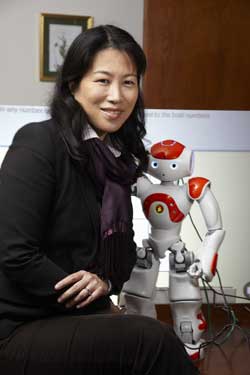
As it turned out, Projo (short for Projective Agent) was able to solve the problems, and he drew a plastic hand across his forehead in relief when Okita praised him for a job well done. But in many ways, his potential fallibility was the point. Okita and her students write programs for robots and avatars—virtual characters animated by humans through computers —to help small groups of learners (mostly elementary- and middle-school students) practice sets of problems in English, math, biology and other subjects. On the one hand, the artificial critters can assume the efficient, machine-like role you might expect, monitoring kids as they progress through their lessons and tracking the problems they get wrong, prompting repetitions with the patience that perhaps only a machine could summon. But on the other hand, the robots and avatars that Okita designs can also make the same mistakes students make—a highly valuable service that reflects Okita’s belief that learning, at its best, is a social enterprise.
via Teacher’s College Media Center





